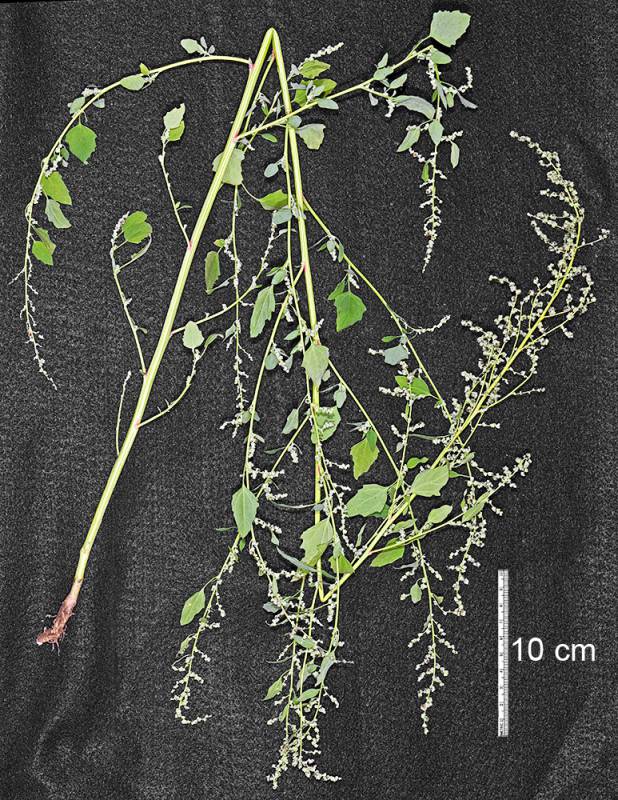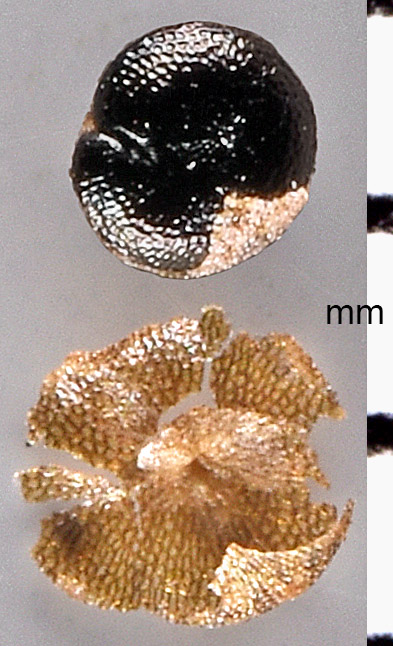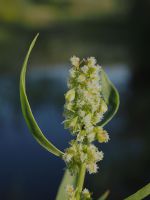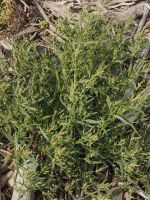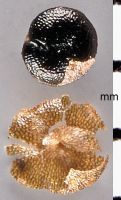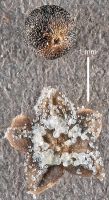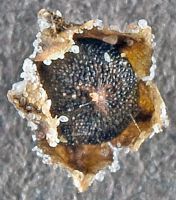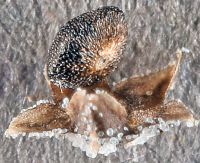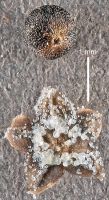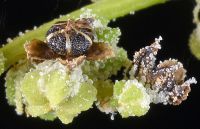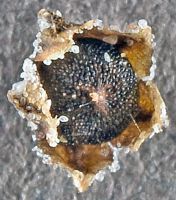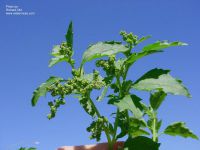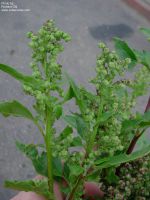Distribution: Occurring on both sides of the Cascades crest in Washington; Alaska to California, east across North America to the Atlantic Coast.
Habitat: Roadsides, fields, riparian zones, wastelots, and other open areas at low to middle elevations.
Flowers: August-October
Origin: Native
Growth Duration: Annual
Conservation Status: Not of concern
Pollination: Wind
Non-aromatic annuals, the stems much-branched to simple, erect to ascending, 1-10 dm. tall.
Leaves alternate, with a mealy excrescence, the blades deltate to rhombic, 1.7-4 cm. long, 3-lobed, the margins toothed above the basal lobes.
Inflorescence erect, with leafy bracts, the flowers in clusters in compound spikes, the clusters rounded, 4-7 mm. in diameter; bracts absent; perianth segments 5, distinct to base, the lobes ovate to deltate, about 1 mm. long and wide, often prominently keeled; stamens 5; styles with yellow area at base; stigmas 2.
Utricle ovoid, honeycomb and wrinkled.
Publication: Chenop. Monogr. Enum. 23. 1840.
-
var. zschackei – pitseed goosefoot
 Occurring on both sides of the Cascades crest in Washington; Alaska to California, east across North America to the Atlantic Coast.
Occurring on both sides of the Cascades crest in Washington; Alaska to California, east across North America to the Atlantic Coast.
PNW Herbaria: Specimen records of Chenopodium berlandieri in the Consortium of Pacific Northwest Herbaria database.
WA Flora Checklist: Chenopodium berlandieri checklist entry.
OregonFlora: Chenopodium berlandieri information.
E-Flora BC: Chenopodium berlandieri atlas page.
CalPhotos: Chenopodium berlandieri photos.
USDA Plants: Chenopodium berlandieri information.


